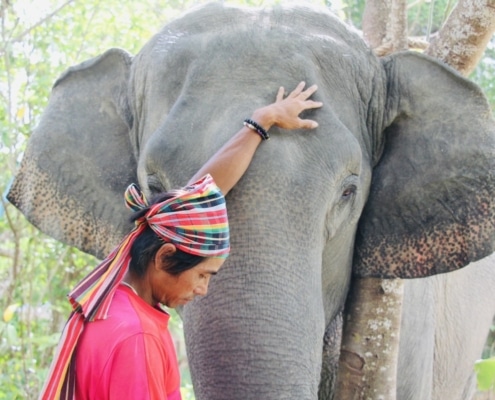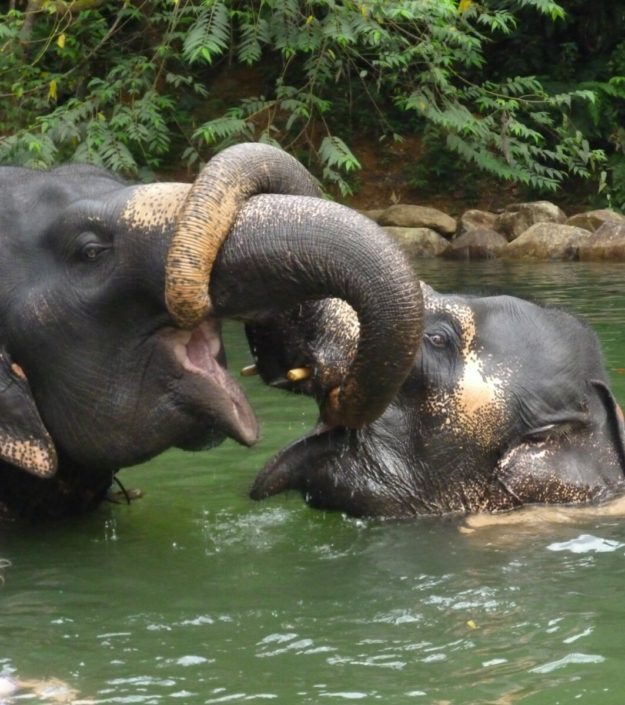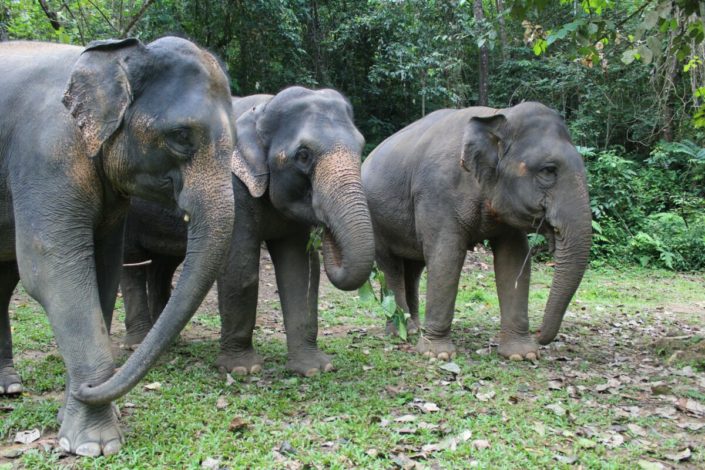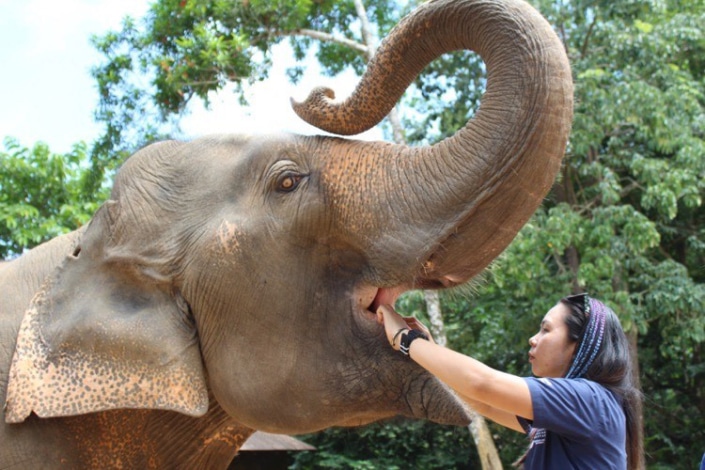The bond between a Mahout and his elephant can be very strong
It is often said that “elephants never forget”. Most elephant carers in Thailand, known as mahouts or Kwan-Chaangs, would tell you that their elephants certainly have exceptional memories! There is also a growing evidence base which suggests that elephants have even better memories than humans.
Elephants need powerful memories – even in the wild, they can live up to around 60 years. In elephant herds, age has a big role in hierarchy. Older elephants get the most respect, because they have the most experience. Their wisdom can mean the difference between life and death. If there is a severe drought, maybe only the oldest elephant in the herd will remember where water remained during the drought when she was young. Elephant herds are typically made up of related females, with one male, who are all led by the oldest female, the matriarch.
With domesticated elephants, an elephant’s mahout acts a bit like a matriarch. Man and elephant are often paired together for life, so domesticated elephants learn to recognise their mahout. They may act on-guard if they feel threatened, spreading their ears and standing very still, but then relax once their mahout appears. Elephants are often seen to recognise each other after spending years apart. They become very excited, trumpeting and running over to touch each other.[1] It appears that elephants may need a good memory in part because they are very social (see our journal post on elephant team work).
Elephants also have the biggest brains of all land animals – their brains weigh about 5 kg. Some of this can be explained by the fact elephants have such large bodies to control, but their brains are even bigger than scientists would expect, based on their body size. The outermost layer of the brain, the cerebral cortex, is especially large.[2] This area is associated with conscious thought, problem-solving, retrieving old memories and forming new ones.
The cerebral cortex is especially large and wrinkly in highly intelligent animals like humans, great apes, dolphins and elephants. The wrinkles increase the surface area, which increases the number of nervous pathways that can come in and carry messages from other parts of the brain, like the hippocampus. We know that memories are formed in our hippocampus, before being stored above it in the cerebral cortex for future recollection.[3] The elephant cerebral cortex is especially large in the region above the hippocampus.[2] When the behavioural and biological evidence is combined, it is clear that elephants have exceptional memories. The elephant cerebral cortex appears even more wrinkled than that of humans. This suggests that elephants may have even more powerful memories than humans.
A vivid memory is a mixed blessing – many symptoms associated with Post-Traumatic Stress Disorder have been identified in mistreated elephants.[4] STEF is providing free veterinary care to any elephants throughout Southern Thailand and educating elephant owners in the process. This is helping to improve the treatment and living conditions of domesticated elephants, and thereby protecting their welfare.
Find out more:
“Elephants Never Forget”:
https://www.scientificamerican.com/article/elephants-never-forget/
“Memory and the Brain”:
https://thebrain.mcgill.ca/flash/d/d_07/d_07_cr/d_07_cr_tra/d_07_cr_tra.html
References:
[1] Ritchie, J. (2009). Fact or Fiction? Elephants Never Forget. Scientific American. 12.01.09
[2] Shoshani, J et al. (2006). Elephant brain: Part I: Gross morphology, functions, comparative anatomy, and evolution. Brain Research Bulletin. 70(2), pp.124-157. [Online]. Available at: https://www.sciencedirect.com/science/article/abs/pii/S0361923006001146?via%3Dihub [Accessed 30.07.22].
[3] Bird, C; Burgess, N. (2008). The hippocampus and memory: insights from spatial processing. Nature Reviews Neuroscience. 9, p.182–194. [Online]. Available at: https://www.nature.com/articles/nrn2335 [Accessed 20.07.22].
[4] Rizzolo, J.B; Bradshaw, G.A. (2016). Asian Elephants in Culture and Nature. Sri Lanka: Centre for Asian Studies, University of Kelaniya. pp.291-297.
[Click on photos to enlarge and read captions]





